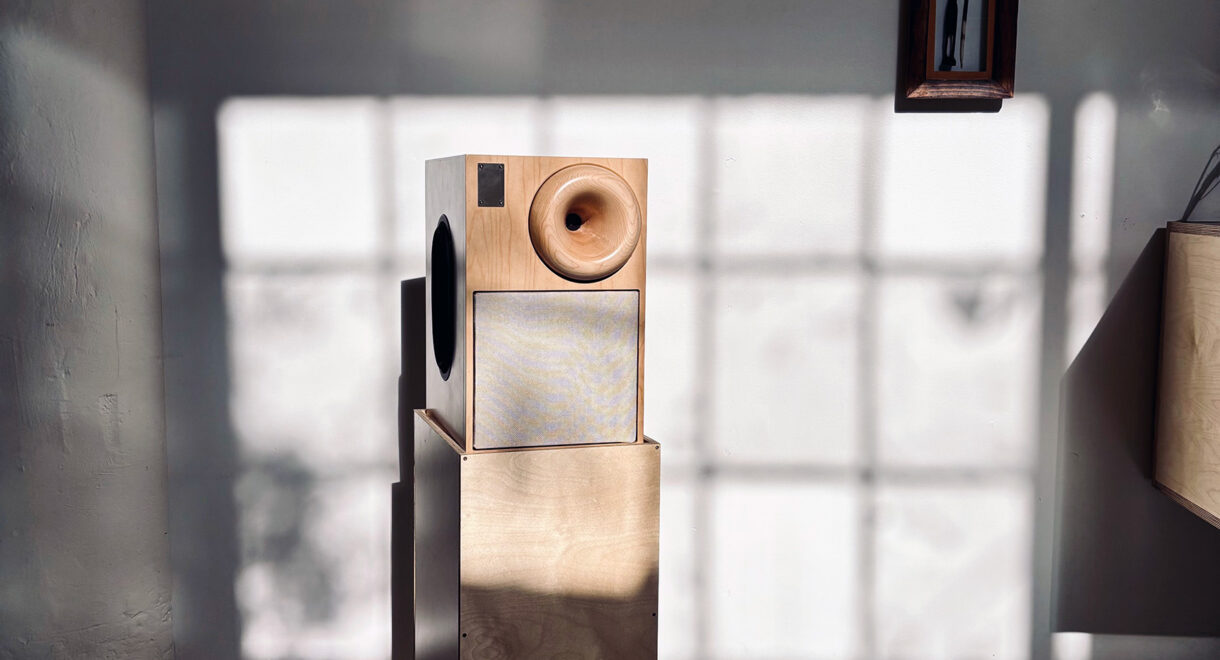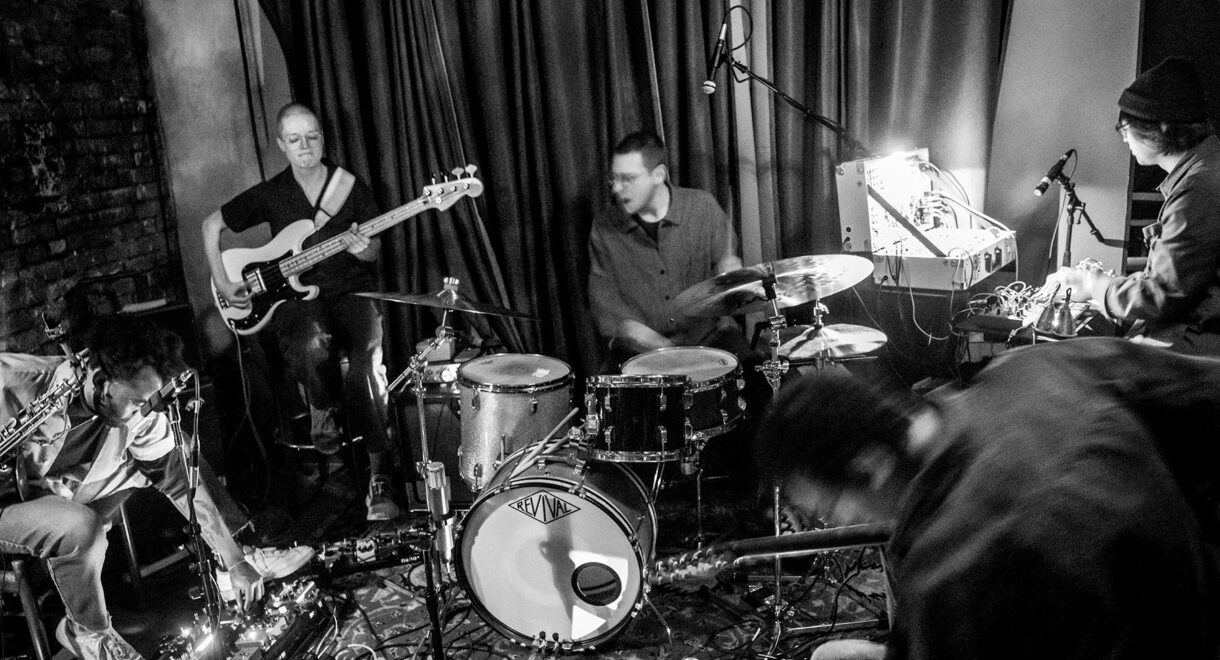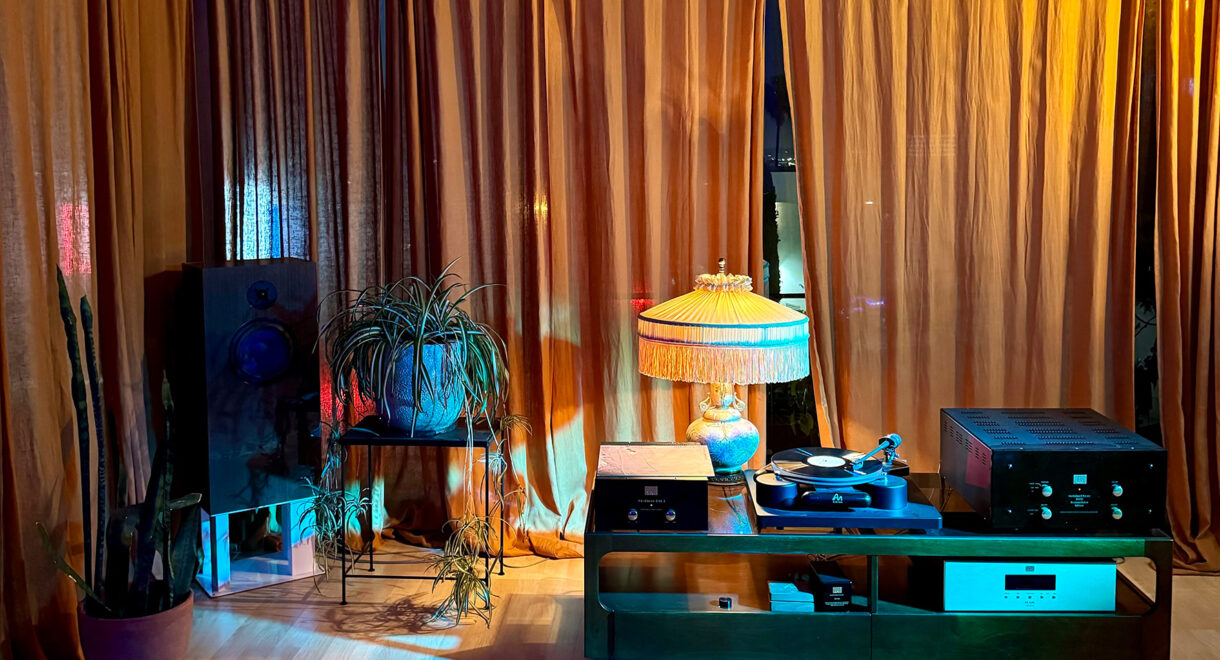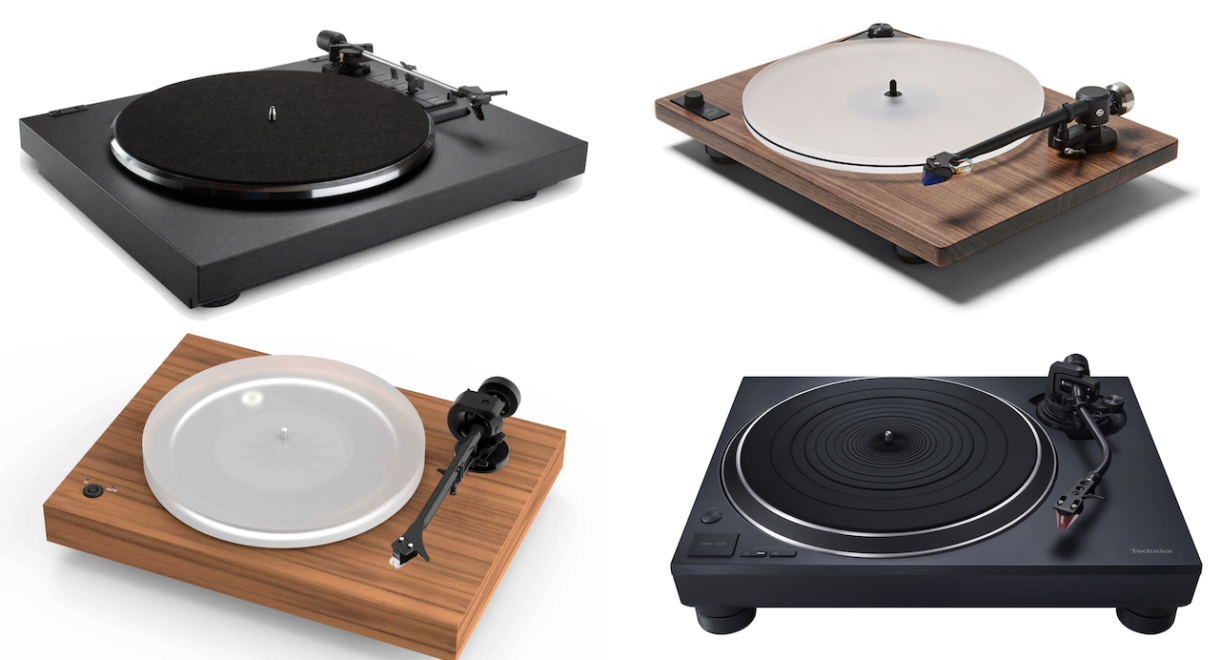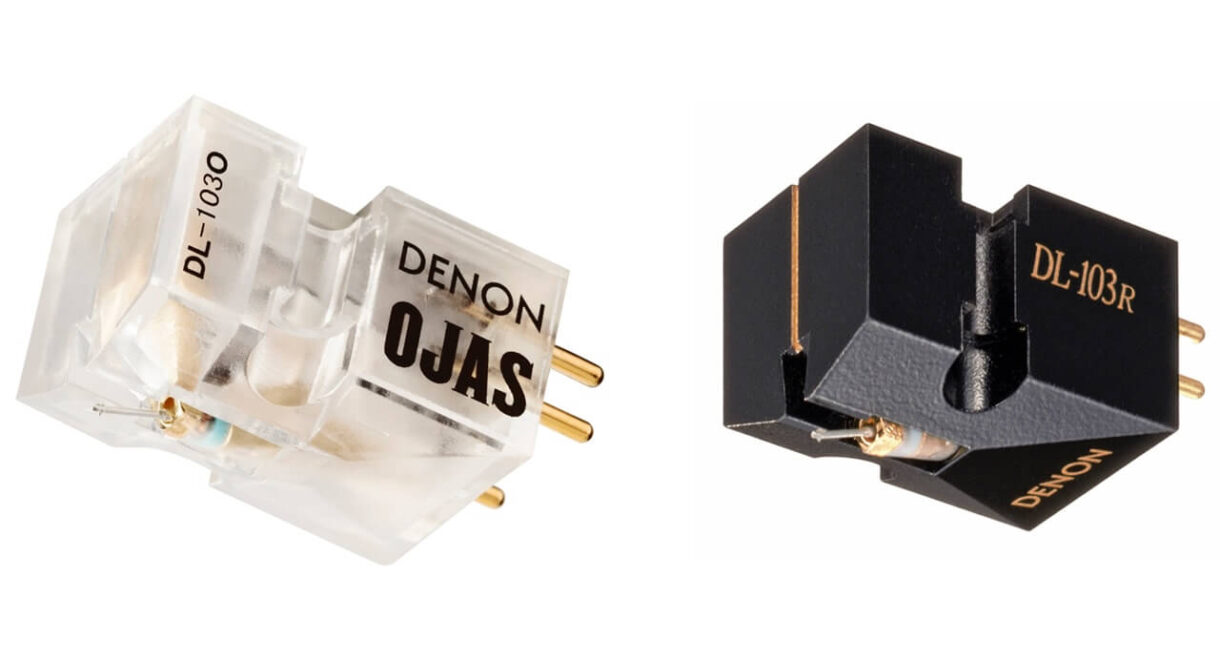Transparent clarity, deep bass, and “Invisible Sound” from German audio company ADS. Background: One of the lesser known hi-fi brands of the ’70s, ADS (Analog and Digital Systems) […]
Analog Heart: In Conversation with Varia Instruments’ Simon Schär

Andrew Lowell in conversation with Varia Instruments co-founder Simon Schär.
Speaking with ISC from his workshop in Berne, Switzerland, Varia Instruments co-founder Simon Schär is beaming with energy. After a 10-hour day assembling various mechanical components, stress-testing electrical parts, welding cylinders, and fulfilling a long-waiting list of international orders, the telltale signs of fatigue are nowhere to be found in Simon’s lively demeanor. Before the interview gets underway, Simon takes me on a virtual tour of the workshop. He introduces me to his coworkers, explaining the different assembly processes and protocols, and excitedly shows off the newest addition to the Varia Instruments breakroom: a recently completed DJ booth built from scratch by one of Simon’s friends.
For the past 9 years, Simon and his business partner, Marcel Schneider, have been building some of the finest rotary DJ mixers on the market: the 2-channel RDM20 and the 4-channel RDM40. In addition to the two mixers, Varia Instruments offers the TTW10 – a hand cut, precision turntable weight that doubles as a 45 adapter. From concept to completion, all of Varia Instruments’ products are hand-built and carefully assembled by a small team of engineers and music lovers in Marcel and Simon’s hometown of Berne.
Varia Instruments products are praised for their sleek design, stout durability, range of features, and – most importantly – their excellent and robust sound quality. Louie Vega, Jeff Mills, Gerd Janson, and Osunlade are just a few of the many DJs who have offered glowing reviews of Varia Instruments’ high-end audio gear. Lucky for us, Varia Instruments’ RDM20 has also found a home with ISC at our listening bar in New York City.
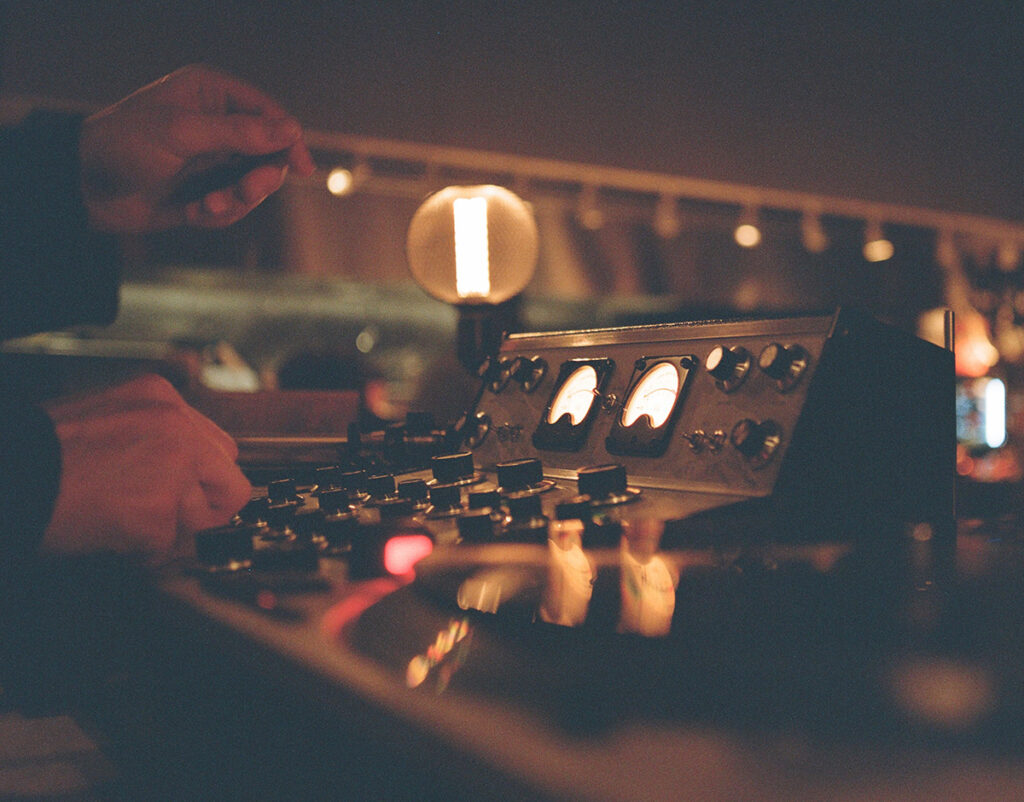
My interview with Simon came to fruition after receiving a DM from the Varia Instruments Instagram account inquiring about a photo I shot of the RDM40. Shortly after, Simon and I began exchanging messages, sharing mixes, sending photos of records we love, and chatting about music. Eventually Simon set aside time from his busy schedule to speak with In Sheep’s Clothing about the origins of Varia Instruments, the similarities and differences of analog culture around the world, and the challenges and rewards of building a business with passion. The following conversation has been edited for length and clarity.
Andrew Lowell (In Sheep’s Clothing): Let’s start from the beginning. What were the origins of Varia Instruments. How did it all start?
Simon Schär: Well, really Varia Instruments was born out of a huge coincidence. It almost felt like it was meant to be. I’ve been DJing for half of my life – 17 years ago now – and you know, you make this development when you first start DJing. First you get records from the flea markets, then you discover Discogs and record stores. And the same development occurs with the equipment. I started with a shitty Hitachi turntable, and at a certain point I bought another turntable, and slowly I built my setup until eventually I managed to have two proper DJ turntables, some speakers that were given to me by my dad and I was truly satisfied with everything but the mixer. I used to have an old Vestax PMC 05 Pro 2, which is really a hiphop battle mixer, before I got a Vestax PMC25 with an isolator on it. But I was never really happy with the quality or the features. There were things that were missing or not nicely done. So I began searching for the right mixer, which was sort of an endeavor. The quality wasn’t good enough, or some features were missing, or it was too expensive, or I had no chance to test it.
AL: What were some of the features that you felt were missing?
SS: In particular, I really wanted to have a full isolator on the channel, not only an EQ. And it had to be three bands: bass, middle and treble – not only bass and treble. I also wanted to have a cue mix, which wasn’t available on all mixers. At the time, there wasn’t really a DJ mixer out there with isolators on each channel. I couldn’t find a single model. Nowadays, a few other brands are doing it, but I think Varia is one of the first companies that somehow came up with that feature.
So as I was going through this search, I began speaking with friends and fellow DJs until eventually I spoke with my friend Marc who suggested that I reach out to someone named “Marcel” who made a prototype of some sort of DJ mixer. And I was like, “Wait a second, who is Marcel? I don’t know this guy.” Imagine, there was a person in the same town, at the same time, doing this very particular thing I was looking for. When I called him, he was very open to meeting and showing me his creation.
AL: This was in 2015?
SS: Yes, November 2015. Marcel invited me over to his place to check out the prototype and I went there with a list – like literally, I wrote out a list of all of the features I wanted in my dream mixer and when I first saw Marcel’s prototype, it checked every single box on my list. The isolator on the channel, the master isolator, the cue mix – everything was there. And it was a super nice machine already. I expected it to be some sort of cardboard box with some cheap knobs on it. So I was totally blown away. Plus, Marcel and myself, we got along really well almost right away. Quickly I asked him if he would be willing to help me build a mixer for myself and he told me, “Sure, let’s do it, I’m happy to help you.” After some discussions, we decided to not only build one mixer for myself, but to build a batch of 10 mixers with the idea that we could sell one here and there to our friends.
Shortly after we met, we began to work on it. First we did some revisions on the original prototype. We did proper branding and everything, but it was very much a project. It was never the idea like, “Hey, that’s our business idea let’s build a company.” So by the time we finished those first ten mixers, they were already sold out. During the process, when we were building everything, people started to call us. You know, like, “Hey, my friend told me that you’re building mixers now, is that true?” and we’d be like “Yeah, we’re trying” and they’d go “I’ll take one!”
AL: What was your role in the beginning, since you mentioned that Marcel already built this original prototype? Was there any sort of technical component that you were adding to the process of building this first run of mixers?
SS: All of the electronic design is done by Marcel himself. He’s like the mastermind of Varia Instruments, because he’s an electronics engineer. Plus he’s a sound engineer. And my part is the mechanics. I did an apprenticeship in mechanics, so I could bring in my knowledge on the hardware side of things, especially the housing of the mixer, the face plates, etc. But I was also just another creative mind, another perspective on what DJing is, how to use it, and ways it could be improved. It really is the Dream Team: Marcel with his deep knowledge of electronics, about audio technology; my background with the more mechanical things, with the creative side of things, and together it works very well.
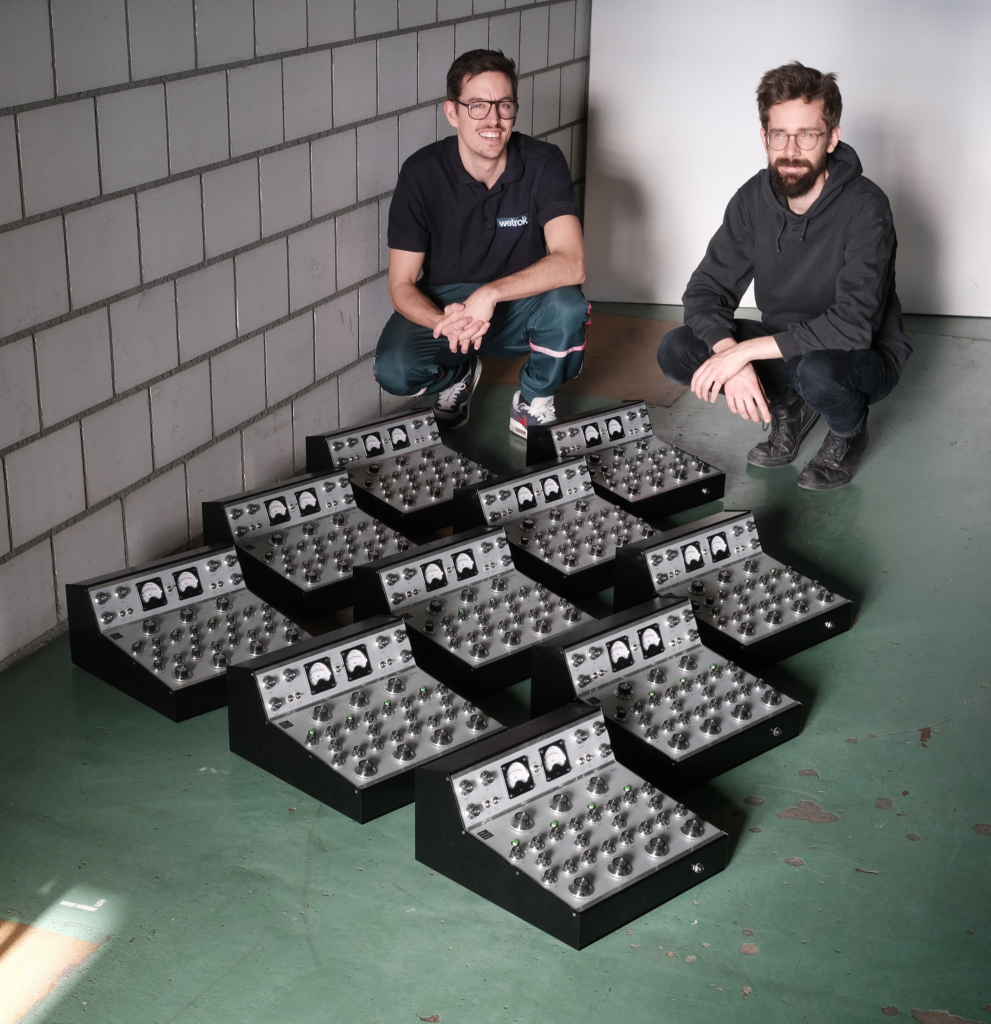
AL: You built the first ten mixers and they've all sold out. What was the next step?
SS: We were pretty surprised about all of the new orders coming in and decided soon after to do another run. It really started picking up, and there was some real demand. Step by step we went further down the road. We increased the order quantities for all the materials and after a couple months we began to enlarge our tiny workshop. And something we’ve done since the very beginning is to optimize wherever we see room for improvements: It may be a step in the production line, a new component that results in better quality, or a process that could run smoother afterwards.
We never stop exploring. Marcel and I aren’t the risky business types either. The way we went really suits us – better many small steps towards the right direction than thinking big and finding investors and doing weird things to expand profits. After a while, Marcel quit his job. Another year later, I quit my job as well. It all grew very organically, and it still does.
AL: It's wild to think that when the business with Marcel started growing, you guys only knew each other for a few years. What was it like quitting your job and going into business with someone who was, essentially, a new person in your life? Did you ever have any hesitation like, “Man, I don't really know this guy. Could he screw me over?”
SS: I was never worried about that, because Marcel and I have very open communication and honesty is very important for both of us. I mean, we are similar in a lot of ways, but we also share some differences as well. He is a pretty calm, quiet person, and I’m more like the loud, extroverted guy. Even our interests are different. But somehow it was almost like fate brought us together and these differences between us are all really healthy because you always need to discuss things, share your perspectives, and you have to find your path together. It’s really helpful in a way.
AL: So you guys have built the RDM20. How were you selling these? Still word of mouth, or were you marketing it yet?
SS: Yeah, the RDM 20 was our first product. And even when we were building those 10 mixers I mentioned earlier, we made an effort to somehow do it properly and to create a brand. My girlfriend at the time was a graphic designer, so we got her to make a proper logo, we built a website, we shot some nice photos, but we never expected it to go this way. It was always more of a fun project than a business.
AL: When did you start development on the other Varia Instruments products? Specifically, the turntable weights and the RDM40.
SS: Two years after that first run of mixers, we began working on our turntable weight: the TTW10. And again–this was a product that we developed out of a need from ourselves. Also around this time, the first clubs began contacting us and asking if we had a 4-channel mixer available. At first we didn’t feel it was necessary (as you can connect up to four line sources and two turntables to the RDM 20), but as time went on, our opinion began to change. I think we were up for a new challenge, and there was some real demand for a 4-channel model. So, we started to sketch, then we built models out of cardboard boxes, later with CNC milled wood parts. This early process of creating something from scratch has an incredible magic to it and it’s without a doubt what I like most about my job!
Anyway, from the first drawings of the RDM40 to the final product, it took around three years. That’s a long time, but we had to keep up with the production line for the RDM20 and the turntable weights, too – busy times!
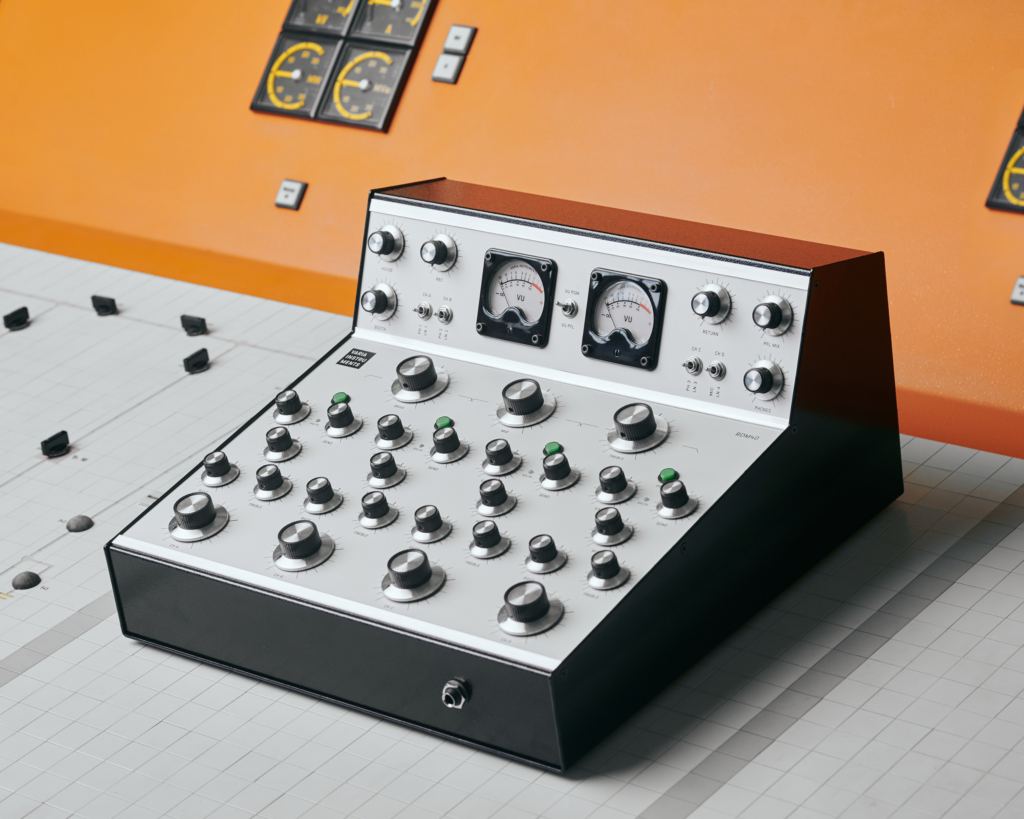
“I think the most difficult part is to create a product with a top quality standard, which pays our bills on one side, but is affordable for the DJs out there.”
AL: When you were developing the RDM-40, was there anyone you spoke with from the HiFi/DJ community that gave you feedback or advice?
SS: We always traveled quite a bit even with the RDM20. When we released it, we traveled to Paris, we went to London, we went to Berlin, and we would place the mixer for one afternoon in a record store, invite some people so they could try it, they could listen to it, and give us honest feedback. During those travels, we gathered a lot of valuable information, and more than information, but the feeling, you know, like, “Okay, well, what are people down for, what are they looking for? What are the actual needs?”
It took us a long time to define the feature set of the new mixer – where do you draw the line? We still wanted to follow our puristic attitude, but at the same time the device should cover the important functions which are needed in the club context. I am very happy with the outcome, and I think the community is as well. Both private bedroom DJs and venues reacted very positively to the newborn RDM40. We were able to create a mixer without compromising the sound and build quality, and that’s the most important thing for us.
AL: So what were some of the biggest challenges that you faced with launching this whole business? What were some of the things that stood out about bringing Varia to market?
SS: I think the most difficult part is to create a product with a top quality standard, which pays our bills on one side, but is affordable for the DJs out there. Neither are we willing to do any cuts on the quality, nor do we want a product in the luxury price segment which is only affordable to a few wealthy people.
We want our products flying out, serving DJs, vinyl diggers and music lovers all around the world – so it has to be affordable in a way. On the other hand, we’re facing crazy costs of living in Switzerland. Having the whole production here doesn’t help to save money, either. So, finding this balance is always tricky.
AL: When you took me on that tour of the workshop, one of the things that really stood out was how collaborative the Varia team is… Everyone plays a role. It seems like community is probably a big part of the culture. Do you think that translates to your products in any way?
SS: Well, certainly, it brings a lot of joy to ourselves. And, there’s quite a big amount of passion in this project, and we just love having a good time, so how do you have a good time? You invite your friends to do things together, that’s really what we try to do whenever we can. And honestly, I’m also proud to say, “Hey, we were able to create something, which is mostly done locally, and sell this, and make a living out of it, while having such a good time!” That’s a really, really pleasing way of work. Of course, it’s not the cheapest way of doing something. But again, it’s always been more of a passion-driven thing than a business-driven thing. So I’m really satisfied with that.
AL: Would you say that is the defining philosophy and culture of Varia Instruments? To grow organically and to do everything with passion?
SS: Yes. Our work is driven by our passion and love for music. It is always very closely connected and it brings us a lot of joy. We want to follow a way that leads us to places where we can find this joy and passion for music. Even the business side of Varia is just an accessory thing to keep it going, but it’s really not what our hearts are beating for. Yes, we want to do everything in Switzerland, and we want to do everything properly, but the passion is always about the sound, the music, and the culture at large.

“We never stop exploring. Marcel and I aren’t the risky business types either. The way we went really suits us – better many small steps towards the right direction than thinking big and finding investors and doing weird things to expand profits.”
AL: It’s funny because the passion-project angle of Varia Instruments makes a lot of sense to me. When I first saw the RDM20 and RDM40, it gave me this odd sense of nostalgia, like I had seen it somewhere before. The metal casing, the analog VU meter, the backlit green cue buttons, etc. And at first I thought it must have reminded me of the 1970's amplifiers like the Marantz, the old Sonys, Kenwoods. But I read through the Varia Instruments zine and in it you described this passion and love you have for space exploration and it hit me. Oh my god, this design looks like one of the old lunar modules! Am I crazy? Am I wrong on that?
SS: Of course not! Absolutely! We created a “space mission” to underline the launch of the RDM40 because it was a huge endeavor for us. We spent three years working on this project. Hundreds of hours of development. All of the electronics were developed from scratch. It was a massive undertaking.
You mentioned the lunar module: when we were initially building the prototype, I designed the stand of the mixer piece by piece. I also fabricated it by myself on an old milling machine. So, naturally I took a lot of inspiration from the Apollo 11 Mission – and people loved it. It was so beautiful to see the response and to know, “Wow, I’m not the only space guy out there.” People really loved it.
Even my girlfriend got involved in the project. She does some fashion design and actually has her studio here in our workshop. So I asked her to make patches like the ones Astronauts have on their spacesuits. She has an embroidering machine and did some magic tricks to bring my ideas to light. It was so much fun to do that with her! Jeff Mills even heard about it and asked us for an interview for his Escape Velocity magazine. How crazy is that? It should be the other way around!
AL: You and Marcel traveled extensively when you were demoing the mixers... Japan, and Korea, cities in the USA like Detroit, New York City, Miami, and all over Europe. Were there any differences between the places you traveled that stand out in the club/listening room/HiFi context?
SS: It’s interesting. Since we are technicians, we view the clubbing scene from an entirely different perspective. For example, when we traveled to Berlin, we were invited to Berghain to check out their sound system and we went during the daytime when all of the lights were on. It’s a totally different experience than what most people who go raving at a club get to see, and that’s really cool for us because it provides a detailed look at how the clubs themselves are designed. What I’ve seen is that there are venues all over the world that devote a tremendous amount of passion into the space and into the sound system. But these places are still pretty rare, after all.
Some of the differences that really stand out are the sizes of the clubs themselves. I was impressed by many tiny clubs in Japan with amazing sound and intention. European and US clubs tend to be bigger and more focused on bringing in many people, from what I have seen.
AL: Do you feel like the smaller, more intimate clubs are more likely to carry rotary mixers like the RDM20 or RDM40?
SS: Yeah, I would say so. The smaller clubs tend to be more intentional and brought to life through passion. If you want to build a club to make money, you aren’t going to build a small, 150 capacity room… You’ll build a huge space with a 3000+ person capacity. So, yeah I would say that these smaller spaces would be more likely to carry our products since it aligns with this philosophy of doing things for the love of doing it, rather than just for money.
AL: You mentioned being impressed by the sound and vibe of the smaller clubs you’ve visited in Japan. I think most would agree that they’re one of the main countries that has been a driving force on everything Hi-Fi-related since, well, basically from the beginning.
SS: In my opinion, when the Japanese do something, they don’t give only 80%. And, of course, this kind of attitude is perfect when it comes to sound, because a lot of perfection is needed there. So yes, there are amazing sound systems and a wealth of knowledge about everything Hi-Fi. It’s really impressive.
It makes sense that the concept of the so-called listening bar was born in Japan. The idea is to have a place with an exceptional sound system where people could go, enjoy a drink and listen to albums and do nothing but that. And this idea was exported to the rest of the world in the past decade.
I love that good sound systems are popping up everywhere, but it’s somehow a tricky situation: When places in the western world try to replicate this concept, the mindset of the people is totally different. You don’t go to a bar and stay silent for two hours and keep to yourself. You’re there to be social, to meet your friends, to go on a date, whatever. And it’s not really compatible with the original concept of the kissas/listening bars of Japan. Nonetheless, I’m sure that this experience can be cultivated, and there are ways to satisfy the different wishes of the visitors. Why not do a ‘silent listening event’ on the more quiet nights in the beginning of the week, and then have a more easy going evening on weekends?

“I love that good sound systems are popping up everywhere, but it’s somehow a tricky situation: When places in the western world try to replicate this concept, the mindset of the people is totally different.”
AL: It’s funny that you mention that, because we have a Dedicated Listening event on Mondays and Wednesdays at In Sheep’s Clothing NYC.
SS: Well there you have it.
AL: I want to pivot a bit and talk with you about DJing and discovering new music. I watched the mix you did for My Analog Journal recently and I’m always interested in how DJs discover new music so I wanted to touch on that. How do you find new music? Are you on internet radio, music blogs, record stores, word of mouth…
SS: I always buy a lot of records when I’m traveling. So if we have a test session in a record store, I like going through the crates discovering music that way. And here in the workshop we listen to mixes all day long from other DJs, radio shows, NTS, SoundCloud, Mixcloud, whatever. I really like finding music this way because of the work the DJ puts into recording a mix. Recording a 1 or 2 hour mix and coming up with a concept or theme. But a lot of times it’s as simple as a friend saying, “Hey, do you know this record?”
AL: On the subject of record stores, there’s this quote from J Rocc in a documentary that dublab made years ago. He talks about how the best way to get to know a city is to just go to the record stores and they’ll point you in the right direction. And that always resonated with me because whether it’s digging, or DJing, or clubbing, whatever, it’s such a small, tight-knit community that I think really brings people in. It sounds kinda like that’s what you guys did when you were shopping Varia Instruments around as well.
SS: Yeah, I mean, to have a passion for something is great. But to share it with like-minded people, that’s a really amazing thing. And it can be in a record store, it can be at 2 AM on the dancefloor, in a hardware store with another mechanic. Or at an art gallery during an exhibition, you know? Wherever.
AL: It can even be through a DM on Instagram.
SS: Exactly.





